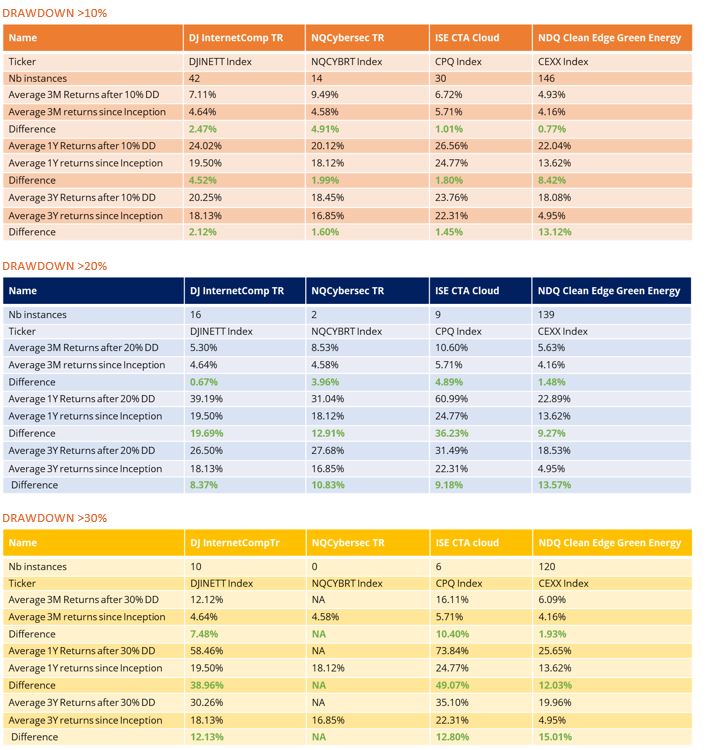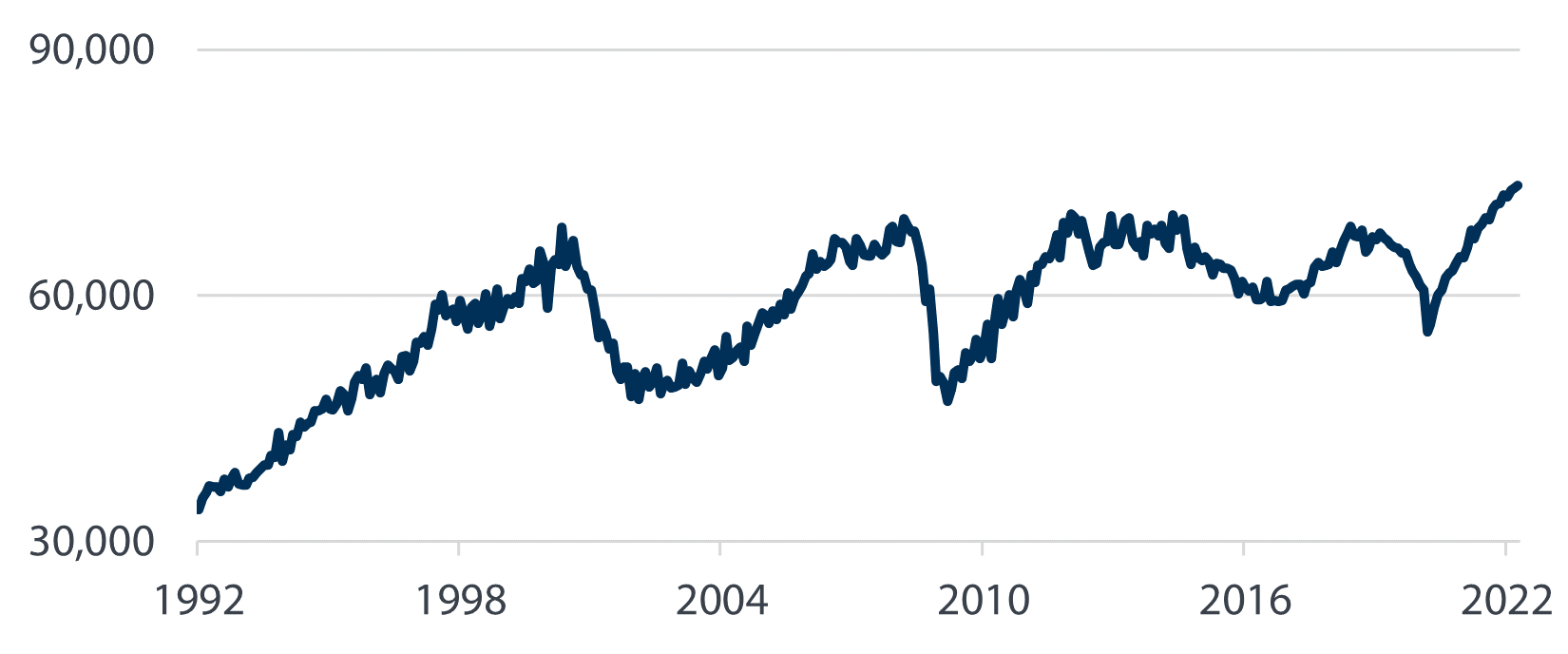“The case for digital transformation has never been more urgent or clearer. Digital technology is a deflationary force in an inflationary economy.”
Satya Nadella
Key takeaways
- For the past 18 months the semiconductor industry has been going through a well-publicised supply chain crisis.
- Governments are now taking decisive steps to diversify and secure their supply chains. Making microchips a strategic resource.
- Thematic investors can find relative certainty that the insatiable demand for microchips has the potential to power their portfolios.
Semiconductors form the foundation of 21st century life; cars, washing machines and smartphones, and for the past 18 months their supply chain issues have been well publicised. Consequently, many of us have had to wait longer for products, with automakers and medical device manufacturers in the eye of this supply chain storm. So much so, that both have recently lobbied the Biden administration to subsidise the construction of new U.S. semiconductor manufacturing capacity.
In 2022, the global semiconductor industry is expected to reach $600 billion 1. But while it’s still dwarfed by the oil and gas industry – for example – which is worth an annual US$5 trillion in revenue 2, 80% of the world’s fuel doesn’t come from a handful of manufacturers in a few countries. Governments are beginning to take decisive steps to diversify and secure microchip supply chains, recognising that these chips are now a strategic resource. For instance, 63%3 of the global supply of semiconductors are produced in Taiwan with 18%4 produced in South Korea. Over the past 30 years, the U.S. share of global semiconductor production has fallen from near 40% to just 12%.
What Caused This Supply Chain Crisis?
There are a number of broad trends which, taken together, are impacting demand for semiconductors. An average EV requires roughly double the amount of chips than a regular car5, more people working from home has increased the demand for laptops and other mobile devices, and the general acceleration of digitalisation (e.g. banking, e-commerce) has applied enormous demand pressure on the supply chain. The Pandemic not only accelerated these changes, but also restricted chip makers from scaling up fast enough to meet this growing demand.
In 2020, the U.S. began regulating sales to certain Chinese firms with links to the Chinese military. This led to not only those firms stockpiling chips, but also to U.S. firms being cut off from chips made in China.
Russia's Retrofitted Tanks
Russia has taken increasingly drastic measures to confront their own chip shortage; moving them from home appliances (fridges, washing machines etc) and retrofitting them into their tanks. While Russia's shortages have little to do with supply chain issues and everything to do with sanctions placed against them, it helps cement the importance of these chips to the global industry. Additionally, the CEO of Dutch company, ASML, recently commented that many companies have been acquiring high-end washing machines in bulk to strip out microchips and re-purpose them.
“We have reports from Ukrainians that when they find Russian military equipment on the ground, it’s filled with semiconductors that they took out of dishwashers and refrigerators” – U.S. Commerce Secretary Gina Raimondo
Semiconductors have cemented their place as a truly essential industry. The absence of just one of these chips, which cost around $1 to produce, can prevent the sale of items costing thousands. Our incredible demand for chips, which is impacting a range of industries spanning industrial automation, 5G infrastructure, AI, Blockchain, and cloud computing, has given thematic investor additional food for thought; amid an incredibly uncertain market environment, where can investors find relative certainty?
As Thierry Breton, the European Commissioner puts it;
“Without chips, no digital transition, green transition, technological leadership".
What Does it Mean to Thematic Investors?
We believe it’s less about finding the right semiconductor company, and more about how broadly semiconductors are enabling a vast array of themes. Instead of buying a handful of assorted semiconductor stocks, investors might want to target those which are rapidly becoming the building blocks for a specific theme. For thematic investors, against a backdrop of a slowing and uncertain global economy, the relative certainty of the insatiable demand for these chips should help power their portfolios.
Sources:
1 Deloitte, 2022
2 Deloitte, 2022
3 EAIS.org, 2021
4 Insider Intelligence, 2021
5 Scientific American, 2021
References to specific companies should not be construed as a recommendation to buy or sell shares or other financial instruments issued by those companies, and neither should they be assumed profitable. You should consider the fund’s investment objectives, risks, and charges and expenses carefully before investing.



 Source: FRED, May 2022
Source: FRED, May 2022


Share